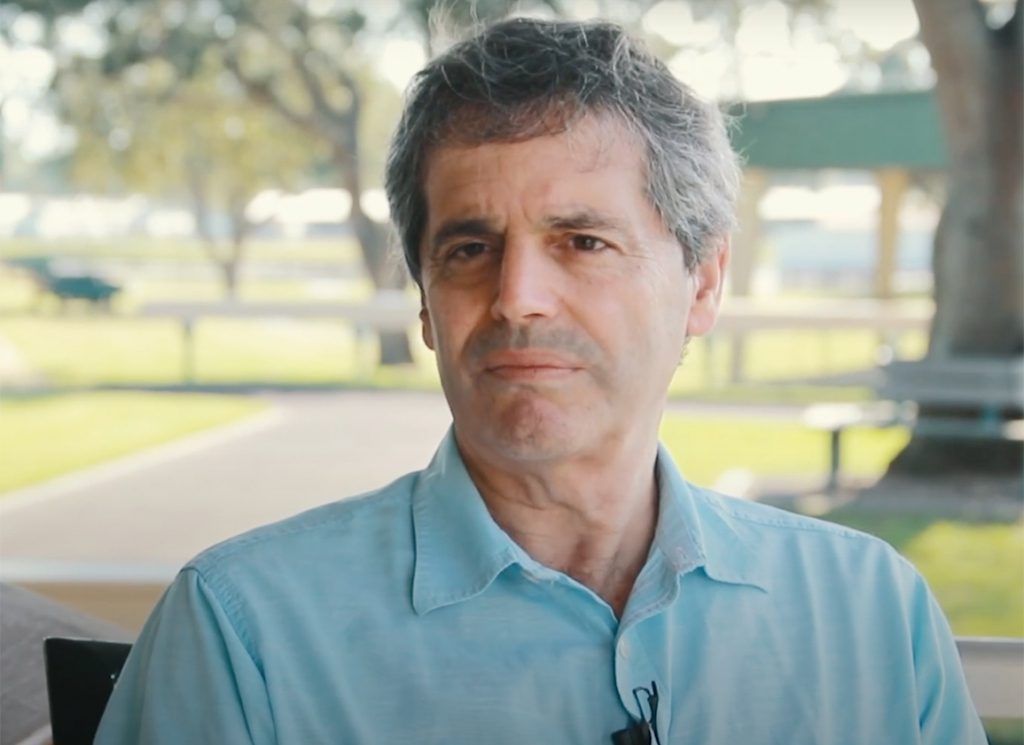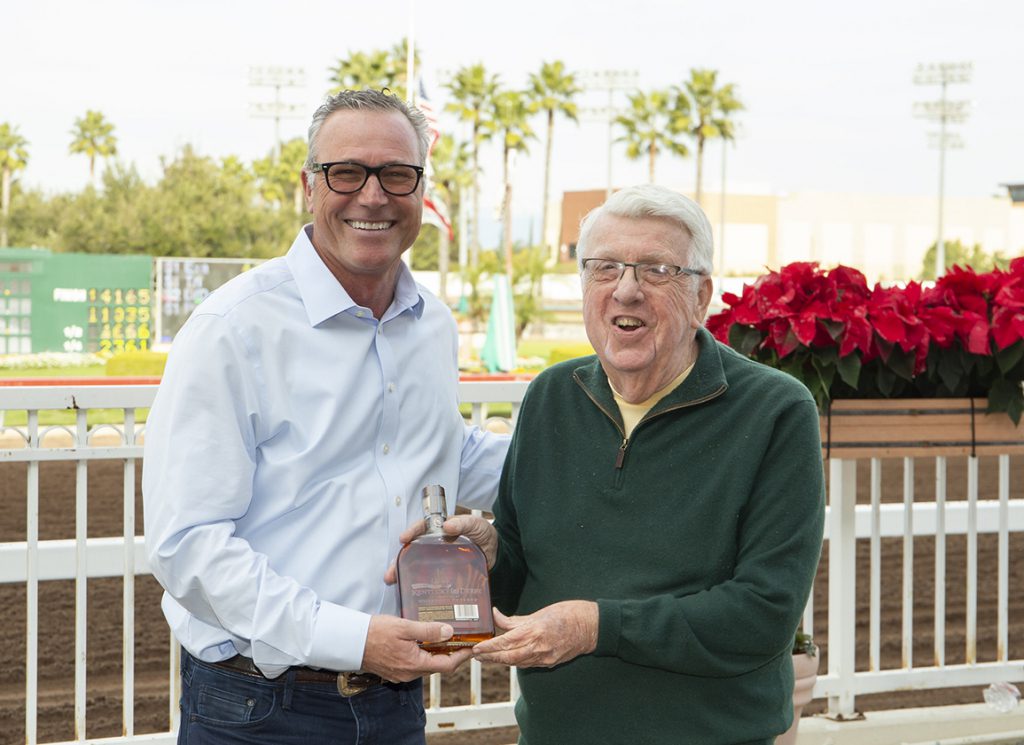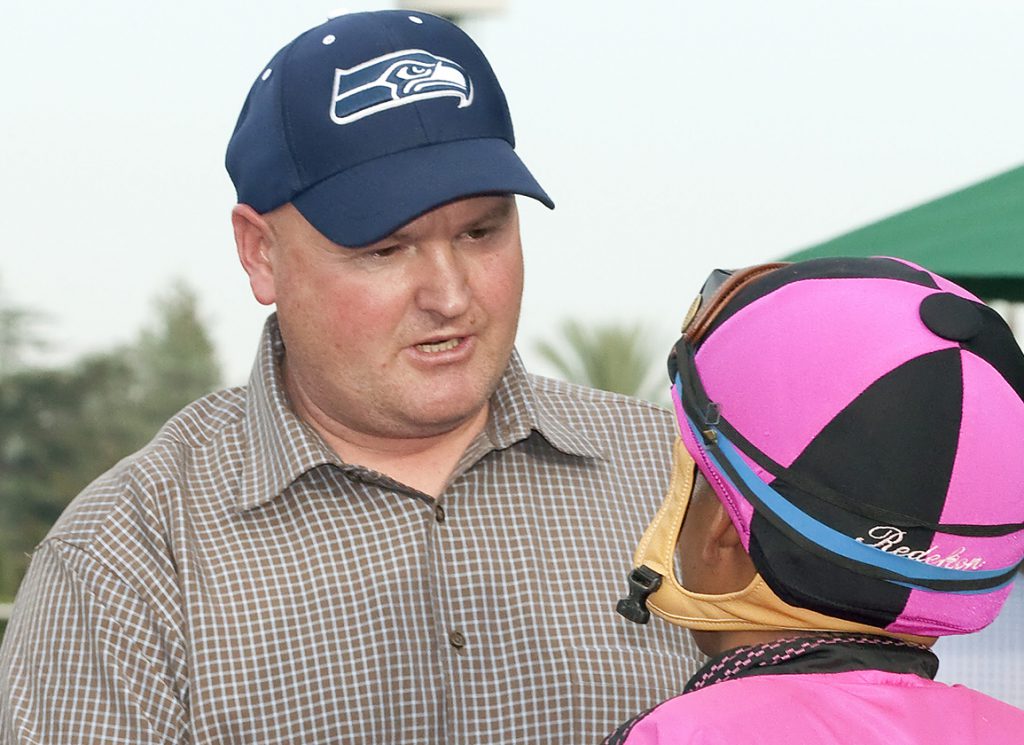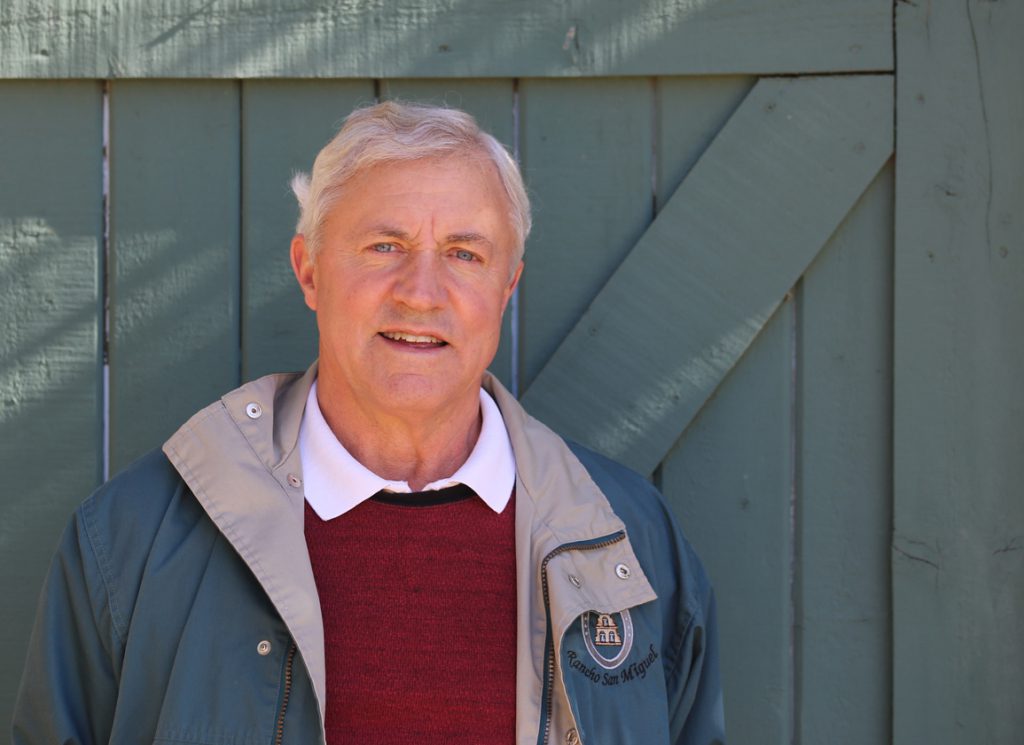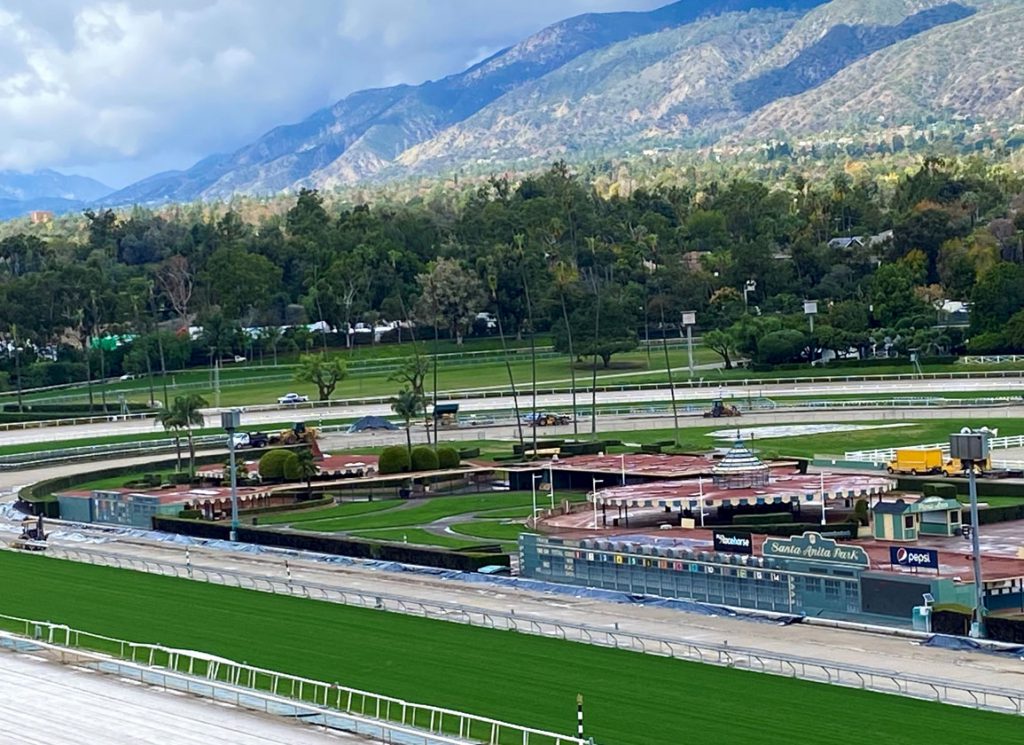Every week, the TDN posts a roundup of the relevant Horseracing Integrity and Safety Act (HISA) related rulings from around the country.
Among this week's rulings, trainer Lorenzo Ruiz was issued a combined 7-year suspension and charged a total of $95,000 in fines for three separate post-race positives for Diisopropylamine, a banned substance under HISA.
The Horseracing Integrity and Welfare Unit (HIWU) classifies Diisopropylamine as a vasodilator, which is a substance that dilates the blood vessels to allow blood to flow more freely through them. Diisopropylamine is also found in several everyday items like tobacco and beauty products, and hand sanitizer.
The three Ruiz-trained runners–Kant Beat the Rock, American Cat and Facts Matter–ran at Los Alamitos last June and July. American Cat and Facts Matter won their respective races, while Kant Beat the Rock finished second.
For these three positives, Ruiz was suspended a combined six years and charged a total of $90,000 in fines and arbitration costs.
Ruiz was also issued an additional year suspension and $5,000 fine for breaching his provisional suspension by continuing to work as an outrider at Los Alamitos.
Trainer Bernard Dunham was also suspended for 30-days and fined $2,500 after his trainee, Shanghai Superfly, tested positive for an alkalinizing agent (TCO2) when finishing fourth at Penn National on Dec. 8.
High total carbon dioxide (TCO2) levels could be an indication of bicarbonate loading–otherwise known as milkshaking–which can neutralize the buildup of lactic acid in muscles, thereby helping the horse's performance.
NEW HISA/HIWU STEWARDS RULINGS
The following rulings were reported on HISA's “rulings” portal and through the Horseracing Integrity and Welfare Unit's (HIWU) “pending” and “resolved” cases portals.
Resolved ADMC Violations
Date: 04/05/2024
Licensee: Gustavo Rodriguez, trainer
Penalty: A fine of $500; imposition of 1.5 Penalty Points. Admission.
Explainer: For the presence of Glycopyrrolate–Controlled Medication (Class C)–in a sample taken from Flint Ridge on 3/1/24. This was a possible violation of Rule 3312–Presence of Controlled Medication Substance and/or its Metabolites or Markers (Post-Race/Vets' List).
Resolution Date: 04/04/2024
Licensee: Lorenzo Ruiz, trainer
Penalty: Accumulated 7-year suspension, $95,000 fine
Explainer: For the presence of Diisopropylamine–a banned substance–in samples taken from Kant Beat the Rock, American Cat and Facts Matter who ran at Los Alamitos respectively on 7/4/23, 6/25/23 and 6/23/23. These were all possible violations of Rule 3212–Presence of a Banned Substance and/or its Metabolites or Markers. This was also a possible violation of Rule 3227–aggravating Circumstances (in connection with Rule 3212 ADRVs).
Resolution Date: 04/04/2024
Licensee: Mary Pattershall, trainer
Penalty: Disqualification of Covered Horse's Race results, including forfeiture of all purses and other compensation, prizes, trophies, points, and rankings and repayment or surrender (as applicable); a fine of $500; imposition of 1.5 Penalty Points. Admission.
Explainer: For the presence of Dimethyl Sulfoxide (DMSO)–Controlled Medication (Class C)–in a sample taken from Shanghai Mike on 2/28/24. This was a possible violation of Rule 3312–Presence of Controlled Medication Substance and/or its Metabolites or Markers (Post-Race/Vets' List).
Resolution Date: 04/03/2024
Licensee: Adan Farias, trainer
Penalty: A fine of $500; imposition of 1.5 Penalty Points. Final decision by HIWU.
Explainer: For the presence of Dexamethasone–Controlled Medication (Class C)–in a sample taken from Misty Rain on 2/25/24. This was a possible violation of Rule 3312–Presence of Controlled Medication Substance and/or its Metabolites or Markers (Post-Race/Vets' List).
Resolution Date: 04/03/2024
Licensee: Michelle Nevin, trainer
Penalty: A fine of $500; imposition of 1.5 Penalty Points. Final decision by HIWU.
Explainer: For the presence of Betamethasone–Controlled Medication (Class C)–in a sample taken from Everlys Girl on 2/19/24. This was a possible violation of Rule 3312–Presence of Controlled Medication Substance and/or its Metabolites or Markers (Post-Race/Vets' List).
Resolution Date: 04/03/2024
Licensee: Bernard Dunham, trainer
Penalty: 30-day period of Ineligibility for Covered Person, beginning on 4/4/24; Disqualification of Covered Horse's Race results, including forfeiture of all purses and other compensation, prizes, trophies, points, and rankings and repayment or surrender (as applicable); a fine of $2,500; imposition of 3 Penalty Points. Final decision by internal adjudication panel.
Explainer: For the potential breach of Rule 4221–Alkalinization or use/administration of an Alkalinizing Agent (TCO2)–on Shanghai Superfly, who finished fourth at Penn National on 12/8/2023. This was also a possible violation of Rule 3313–Use of a Controlled Method During the Race Period.
Pending ADMC Violations
Date: 03/05/2024
Licensee: Wendell Matt, trainer
Penalty: Pending
Alleged violation: Vet's list medication violation
Explainer: For the presence of Phenylbutazone–Controlled Medication (Class C)–in a sample taken from Dixon Tuff on 3/5/24. This is a possible violation of Rule 3312–Presence of Controlled Medication Substance and/or its Metabolites or Markers (Post-Race/Vets' List).
Date: 03/05/2024
Licensee: Wendell Matt, trainer
Penalty: Pending
Alleged violation: Vet's list medication violation
Explainer: For the presence of Phenylbutazone–Controlled Medication (Class C)–in a sample taken from Fire When Ready on 3/5/24. This is a possible violation of Rule 3312–Presence of Controlled Medication Substance and/or its Metabolites or Markers (Post-Race/Vets' List).
Date: 03/13/2024
Licensee: John Cortez, trainer
Penalty: Pending
Alleged violation: Vet's list medication violation
Explainer: For the presence of Acepromazine–Controlled Medication (Class B)–in a sample taken from It'sanybodysgame on 03/13/24. This is a possible violation of Rule 3312–Presence of Controlled Medication Substance and/or its Metabolites or Markers (Post-Race/Vets' List).
Date: 02/26/2024
Licensee: Candelario Villamar, trainer
Penalty: Pending
Alleged violation: Medication violation
Explainer: For the presence of Capsaicin–Controlled Medication (Class B)–in a sample taken from Olivia's Choice, who finished third at Turf Paradise on 02/26/24. This is a possible violation of Rule 3312–Presence of Controlled Medication Substance and/or its Metabolites or Markers (Post-Race/Vets' List).
Date: 03/02/2024
Licensee: Bill McLean, trainer
Penalty: Pending
Alleged violation: Medication violation
Explainer: For the presence of Dimethyl Sulfoxide (DMSO)–Controlled Medication (Class C)–in a sample taken from Street Tiger, who finished fourth at Golden Gate on 3/2/24. This is a possible violation of Rule 3312–Presence of Controlled Medication Substance and/or its Metabolites or Markers (Post-Race/Vets' List).
Date: 03/14/2024
Licensee: Ruben Alvarado, trainer
Penalty: Pending
Alleged violation: Pre-workout joint injection violation
Explainer: A possible violation of Rule 3314–Use or Attempted Use of a Controlled Medication Substance or a Controlled Medication Method–on the horse, One Smokin Moon. This is also a possible violation of Rule 4222–Intra-Articular Injections Within Seven (7) Days of Timed and Reported Workout.
Date: 03/08/2024
Licensee: Amador Sanchez, trainer
Penalty: Pending
Alleged violation: Medication violation
Explainer: For the presence of Capsaicin–Controlled Medication (Class B)–in a sample taken from Grey Princess, who won at Gulfstream Park on 03/08/24. This is a possible violation of Rule 3312–Presence of Controlled Medication Substance and/or its Metabolites or Markers (Post-Race/Vets' List).
Date: 01/28/2024
Licensee: Philip Schoenthal, trainer
Penalty: Provisionally suspended
Alleged Violation: Medication violation
Explainer: For the presence of Methamphetamine–a banned substance–in a sample taken from Prodigy Doll, who won at Laurel Park on 1/28/24. This is a possible violation of Rule 3212–Presence of a Banned Substance and/or its Metabolites or Marker.
Date: 02/09/2024
Licensee: Philip Schoenthal, trainer
Penalty: Provisionally suspended
Alleged Violation: Medication violation
Explainer: For the presence of Methamphetamine–a banned substance–in a sample taken from Determined Driver, who won at Laurel Park on 2/9/24. This is a possible violation of Rule 3212–Presence of a Banned Substance and/or its Metabolites or Marker.
Date: 02/01/2024
Licensee: Andres Gonzalez, trainer
Penalty: Pending
Alleged violation: Medication violation
Explainer: For the presence of Lidocaine–Controlled Medication (Class B)–in a sample taken from Let There Be Peace, who won at Sunland Park on 02/01/24. This is a possible violation of Rule 3312–Presence of Controlled Medication Substance and/or its Metabolites or Markers (Post-Race/Vets' List).
Date: 03/21/2024
Licensee: Richard Mandella, trainer
Penalty: Pending
Alleged violation: Pre-workout joint injection violation
Explainer: A possible violation of Rule 3314–Use or Attempted Use of a Controlled Medication Substance or a Controlled Medication Method–on the horse, Ice Dancing. This is also a possible violation of Rule 4222–Intra-Articular Injections Within Seven (7) Days of Timed and Reported Workout.
Violations of Crop Rule
One important note: HISA's whip use limit is restricted to six strikes during a race.
Oaklawn Park
Joe Bealmear–violation date Apr. 4; $250 fine and one-day suspension
Joe Bealmear–violation date Apr. 5; $250 fine and one-day suspension
Martin Chuan–violation date Apr. 6; $250 fine and one-day suspension
Tampa Bay
Pablo Morales–violation date Apr. 5; $250 fine and one-day suspension
Carlos Rojas–violation date Apr. 5; $250 fine and one-day suspension
OTHER KEY RULINGS
The TDN also publishes a roundup of key official rulings from the primary tracks within the four major racing jurisdictions of California, New York, Florida and Kentucky.
Here's a primer on how each of these jurisdictions adjudicates different offenses, what they make public (or not) and where.
California
Track: Santa Anita
Date: 04/04/2024
Licensee: Neil Drysdale, trainer
Penalty: $2,500 fine
Violation: Program Training
Explainer: Pursuant to a Settlement Agreement and Mutual Release with the California Horse Racing Board, Trainer Neil Drysdale, who was named as trainer in the official program for 'M Is For Magic (While still in the care of the previous trainer), in the fifth race at Del Mar Race Track on 11/11/23, is fined $2,500.00 for violation of California Horse Racing Board Rule #1502 (Program Training Prohibited).
New York
Track: Aqueduct
Date: 04/04/2024
Licensee: Eric Cancel, jockey
Penalty: Three-day suspension
Violation: Careless riding
Explainer: Jockey Mr. Eric Cancel for having waived his right to an appeal is hereby suspended three NYRA racing days 4/14/24, 4/18/24, 4/192024 inclusive. This for careless riding during the running of the 8th race at Aqueduct Racetrack on 3/14/24.
The post Weekly Stewards And Commissions Rulings, Apr. 3-9 appeared first on TDN | Thoroughbred Daily News | Horse Racing News, Results and Video | Thoroughbred Breeding and Auctions.

